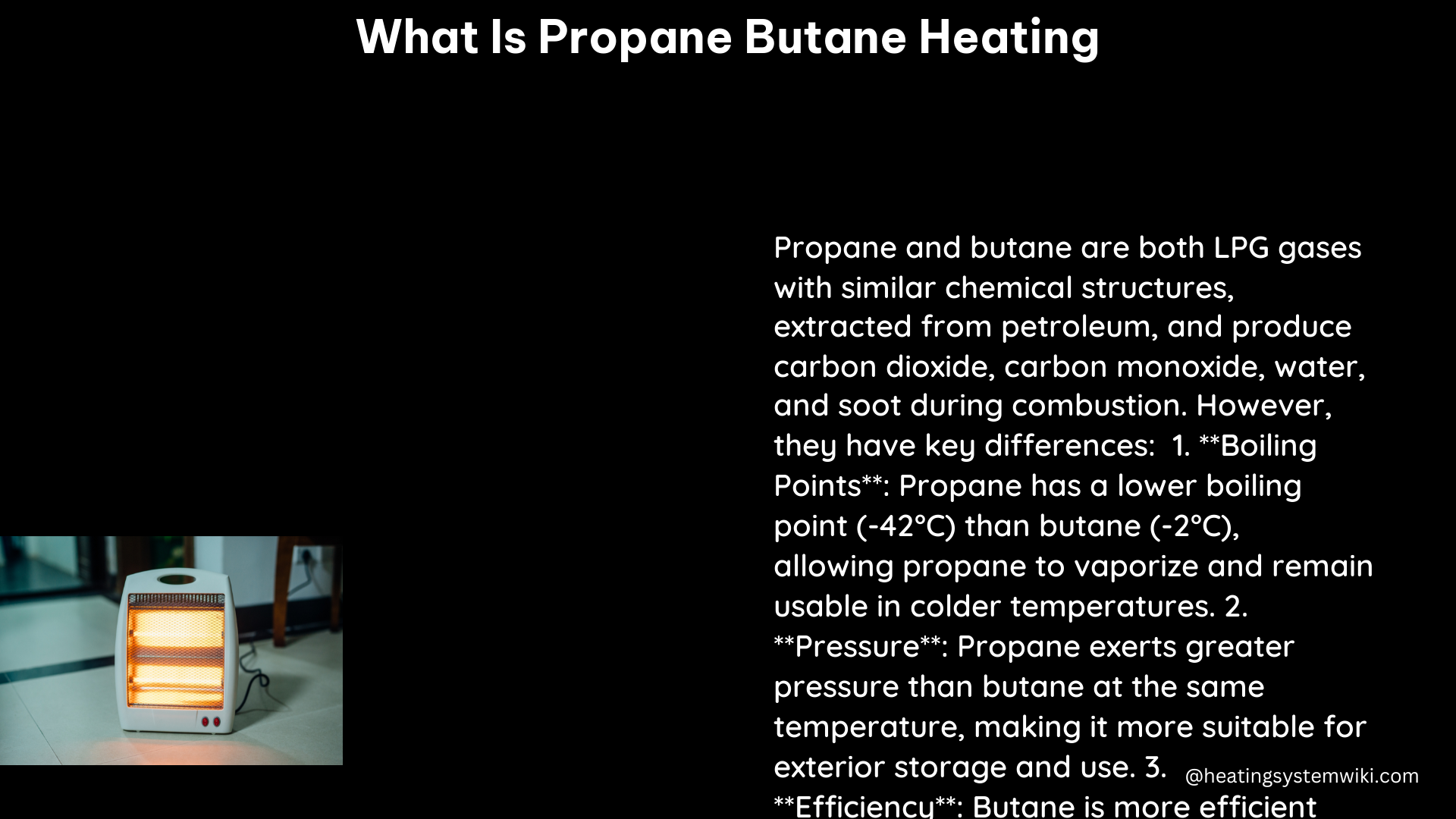Propane and butane are both liquefied petroleum gases (LPGs) that are widely used as fuel sources in industrial and household settings. These two alkanes, with chemical formulas of C3H8 (propane) and C4H10 (butane), share similarities but also exhibit distinct differences that make them suitable for various applications.
Understanding the Differences: Propane vs. Butane
Boiling Point
One of the primary differences between propane and butane is their boiling points. Propane has a boiling point of -42°C (-43.6°F), while butane has a boiling point of -2°C (30.2°F). This means that propane will continue to vaporize and turn into a gas in colder climates, making it more suitable for outdoor use and applications in lower temperatures. Conversely, butane is better suited for use in warmer environments, as it will remain in a liquid state at temperatures above its boiling point.
Pressure and Storage
When stored as a liquid in a tank, propane exerts a greater pressure than butane at the same temperature. This higher pressure makes propane more suitable for exterior storage and use, as the tank can withstand the increased pressure without the risk of leaks or explosions.
Efficiency and Combustion
In terms of efficiency, butane is generally considered more efficient than propane when used as a fuel. If the same amount of each fuel is burned at a temperature above freezing, propane will provide about 12% less energy than butane. However, this efficiency advantage of butane is offset by its poor performance in colder temperatures, as it may not vaporize and ignite as easily as propane.
Availability and Appliance Compatibility
Propane is more commonly available than butane, as most household appliances are designed to be used with propane rather than butane. Additionally, propane tanks often come with built-in safety features, such as pressure relief valves, to protect users. Propane gas also has no odor, which can make a gas leak harder to detect compared to butane.
Cost Considerations
Butane is generally cheaper than propane, and a bottle of butane will typically contain a larger volume of fuel than a bottle of propane. However, the cost of these fuels can vary depending on location and availability.
Technical Specifications

Propane
- Chemical formula: C3H8
- Molar mass: 44.1 g/mol
- Density: 493.00 kg/m³
- Boiling point: -43.6°F (-42°C)
- Melting point: -306.4°F (-188°C)
- Classification: Alkane
Butane
- Chemical formula: C4H10
- Molar mass: 58.12 g/mol
- Density: 2.48 kg/m³
- Boiling point: 30.2°F (-1°C)
- Melting point: -220°F (-140°C)
- Classification: Alkane
DIY: Setting Up Propane or Butane Heating
If you need to use propane or butane for heating or cooking, follow these steps to set up your fuel source:
- Purchase a propane or butane tank or cylinder that is the appropriate size for your needs.
- Inspect the tank or cylinder for any damage or leaks before use.
- Connect the tank or cylinder to your appliance using the appropriate hose and regulator.
- Ensure the valve on the tank or cylinder is closed before connecting it to the appliance.
- Slowly open the valve to allow the gas to flow into the appliance.
- Light the appliance according to the manufacturer’s instructions.
- Always follow safety guidelines when using propane or butane, including storing tanks or cylinders in a well-ventilated area and keeping them away from open flames or sparks.
Remember, it is essential to consider the specific requirements of your application and the environmental conditions when choosing between propane and butane as your fuel source.
